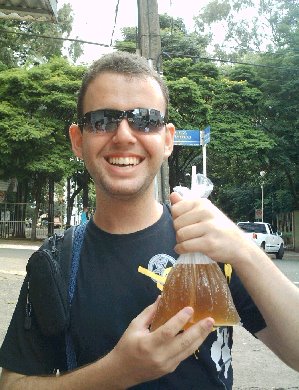The ecological function of extrafloral nectaries: herbivore deterrence by visiting ants and reproductive output in Caryocar brasiliense
The ecological function of extrafloral nectaries: herbivore deterrence by visiting ants and reproductive output in Caryocar brasiliense (Caryocaraceae)
Paulo Sérgio Oliveira
1. Shrubs of Caryocar brasiliense are intensively visited by many ant species in the cerrado vegetation of south-east Brazil. Ants collect nectar from the extrafloral nectaries (EFNs) located on the buds at the apex of the plant.
2. The proportion of C. brasiliense shrubs occupied by ants greatly surpassed that of neighbouring plants without EFNs and this resulted in many more termites being attacked and removed on this plant than on plants lacking EFNs. Ant attacks on Caryocar were more frequent near the EFNs.
3. Ant-exclusion experiments with Caryocar shrubs revealed that ants significantly reduce the infestation levels by the butterfly Eunica bechina, the sucking bud Edessa rufomarginata, the bud-destroying fly Prodiplosis floricola and by a stem-galling wasp. Ants had no effect on the infestation by a leaf-galling wasp.
4. Control (ants present) and treatment (ants excluded) plants produced equal numbers of buds but flower and initial fruit production was significantly greater for ant-visited plants. Higher abortion rates of initial fruits by control plants resulted in similar final fruit and seed sets for plants in either experimental category.
5. The extremely low fertility of cerrado soils is suggested as a possible factor constraining the ability of Caryocar shrubs to provide the resources necessary for growth and development of their heavy fleshy fruits. Higher production of initial fruits by ant-visited shrubs would be neutralized by competition among developing fruits and subsequent abortion.
6. Possible ant-derived benefits to C. brasiliense include: protection of vegetative tissues during plant growth, larger floral display and increased attractiveness to bat pollinators, increased male contribution to fitness through pollen donation and selective abortion of genetically inferior progeny as the maternal investment is adjusted to match available resources.
Key-words: Ant-plant interaction, cerrado vegetation, fruit abortion, fruit set, mutualism.
Essa semana, o texto da discussão do nosso laboratório será apresentado por mim. Eu escolhi esse texto depois de fazer a disciplina do Paulo Oliveira, que por sinal foi muito interessante, na semana passada.
No título desse post está o link para o artigo completo e aqui em baixo segue o endereço do site do Paulo Oliveira, para quem estiver interessado em mais informações sobre esse assunto.
Abraço
Marcos Vinicius


3 Comments:
na verdade, é uma história interessante. Basicamente, começa com os Marauders, ou, para a versão brasileira, os "Marotos", o pai de Harry Potter, James, com seus amigos Sirius e Lupin (sim, eu esqueci de Peter, me processe por isso ;D). Bem, cada um deles tinha um apelido referente a forma animal que tomava. Lupin, por ser um lobisomem, era chamado de Moony, ou Aluado. Sirius, por virar um cachorro, era chamado de Padfoot, ou almofadinhas (tá ligado as patas de um cachorrro? pois é). E, James, virava um cervo (cervo, não viado), e por consequencia, era chamado de pontas, ou, no original, PRONGS. E o que isso tem a ver comigo? Bem, experimenta ter os mesmos amigos que eu tenho, que mais cedo ou mais tarde analogias com Harry Potter irão aparecer, ainda mais quando um dos seus amigos é um lobisomem e outro se comporta como um cachorro ;D
Falaram de Harry Potter! Pessoas de bom gosto frequentam esse blog... ;) ;)
Beijos, Vi!
As formigas dominam o mundo!!!
vou querer ver esse artigo
Contudo, tenho uma teoria muito melhor: essas formigas tem suas "mentes" controladas por Nematoda parasitas. e assim colocaria-se os pontos no i. Os Nematoda dominam o mundo!
kkkkkkk
bjs
Postar um comentário
<< Home